The Skagit Valley and Whidbey’s first 2019 clinic was an excellent event presented by Susan Gonzales.
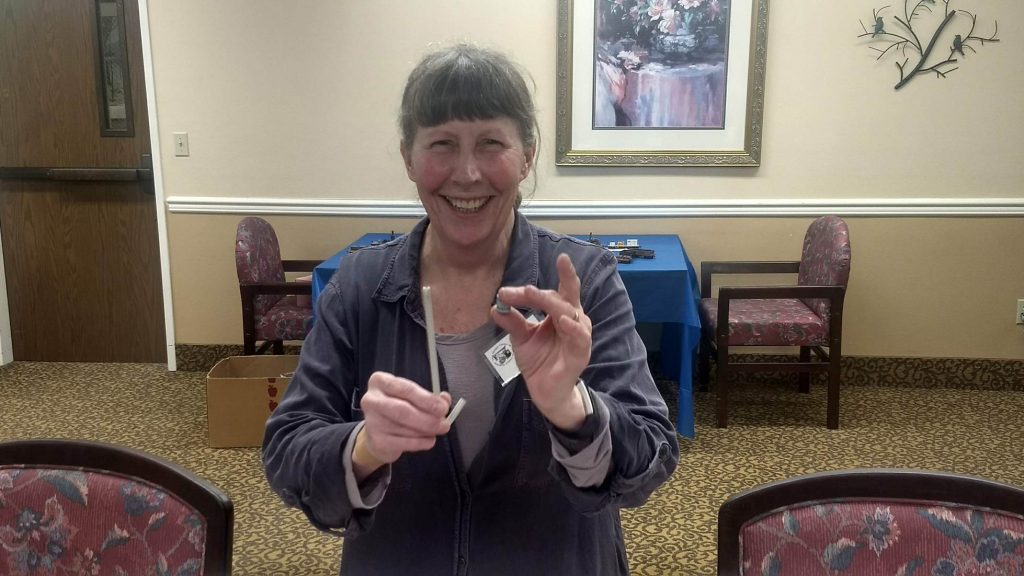
Our objective was to show various types of open car loads and explore different techniques for making loads using common materials found at box stores. We started out the clinic with a display of various clinic members cars and loads and some show and tell on each.
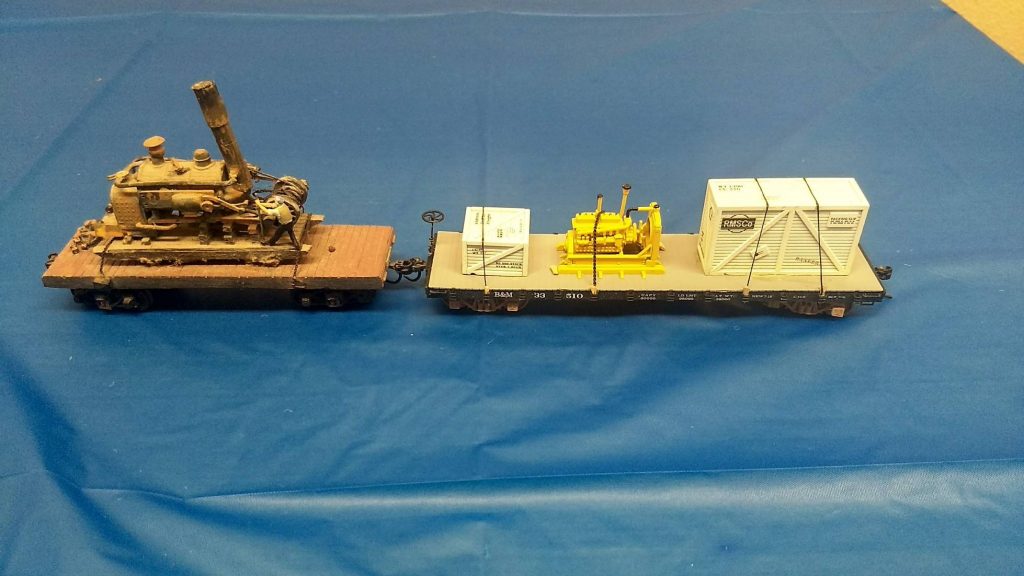
Mike Garcia brought two HO flat cars with a nicely detailed logging donkey and the other with diesel engine loads. All loads were tied down properly.
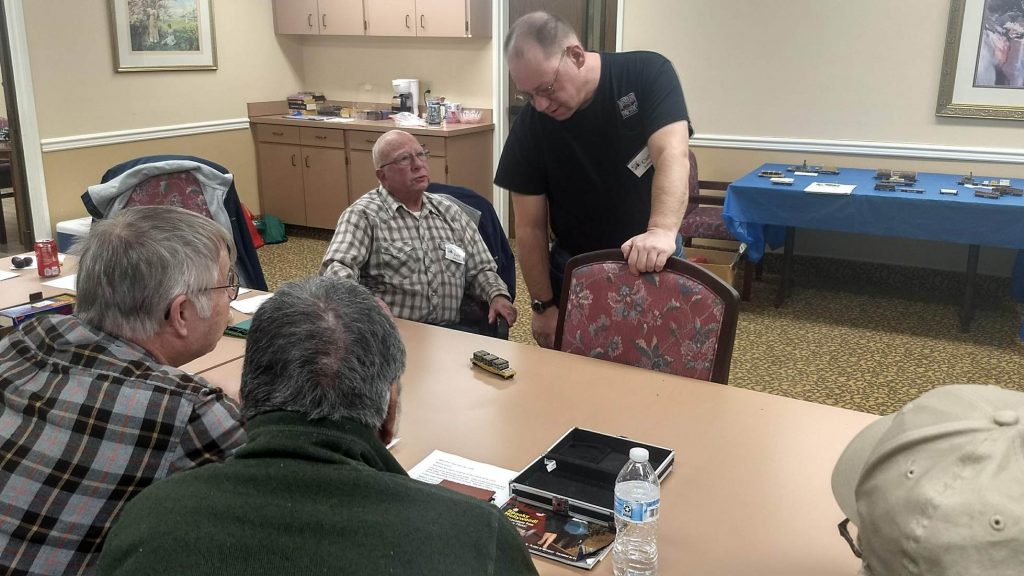
Curt Johnson had two HO cars for work train support. One car contained sets of ties all blocked and staked together and the other with sets of rail segments with blocking in between.
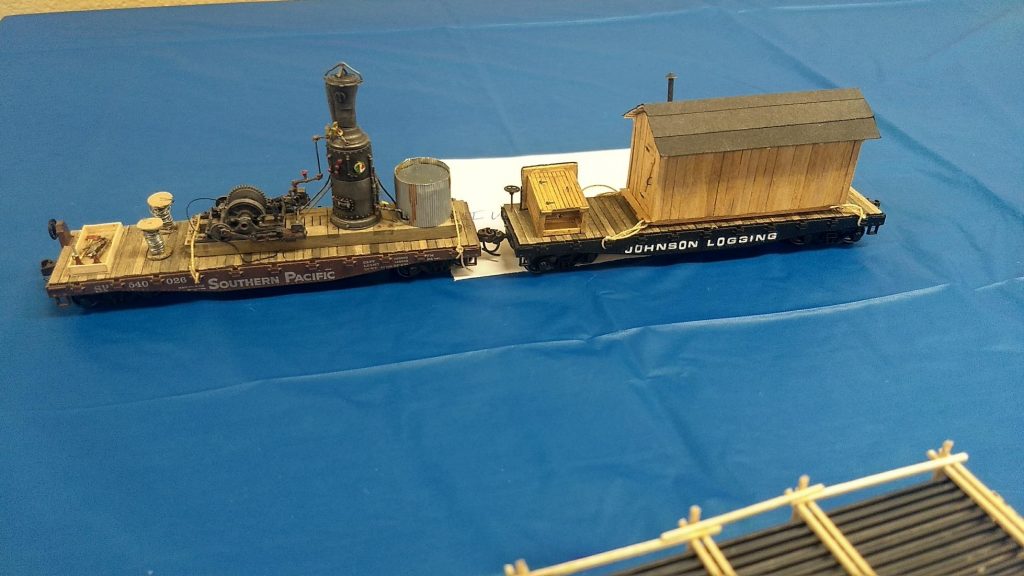
Curt’s dad Iver brought a couple HO logging support cars with a steam donkey load and a camp cabin load complete with outhouse.
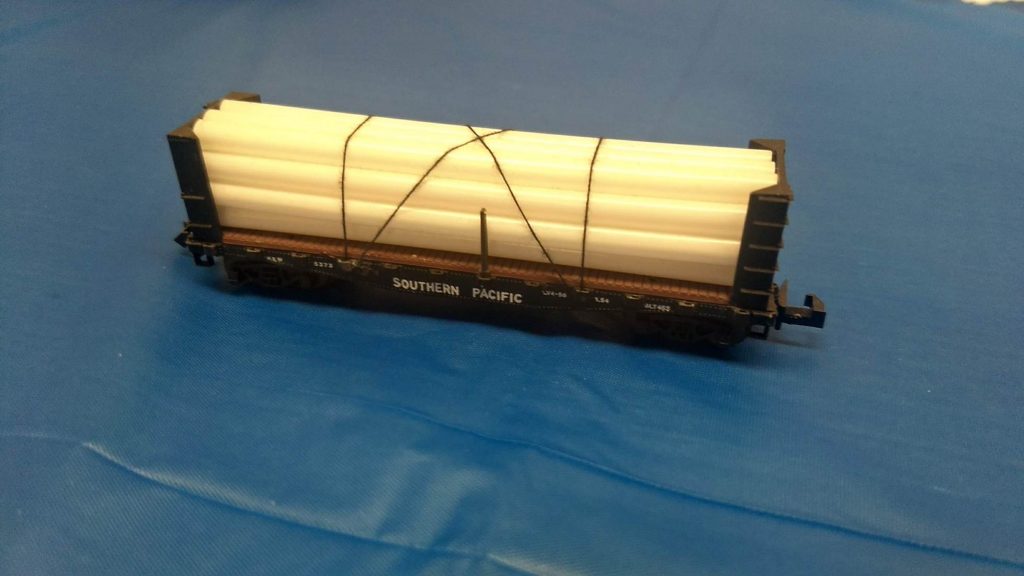
Dennis Perrson showed his N-scale bulkhead flat car with pipe loads made using plastic straw found at the dollar store.
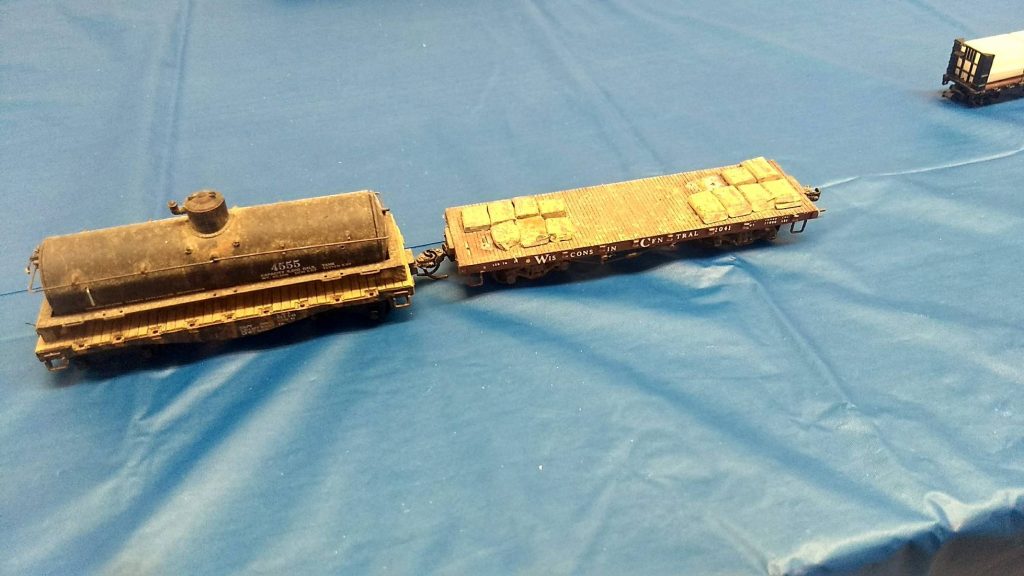
Terry Kandzor displayed some HO cars with a well weathered removable tank load and a flat car with steel slugs.
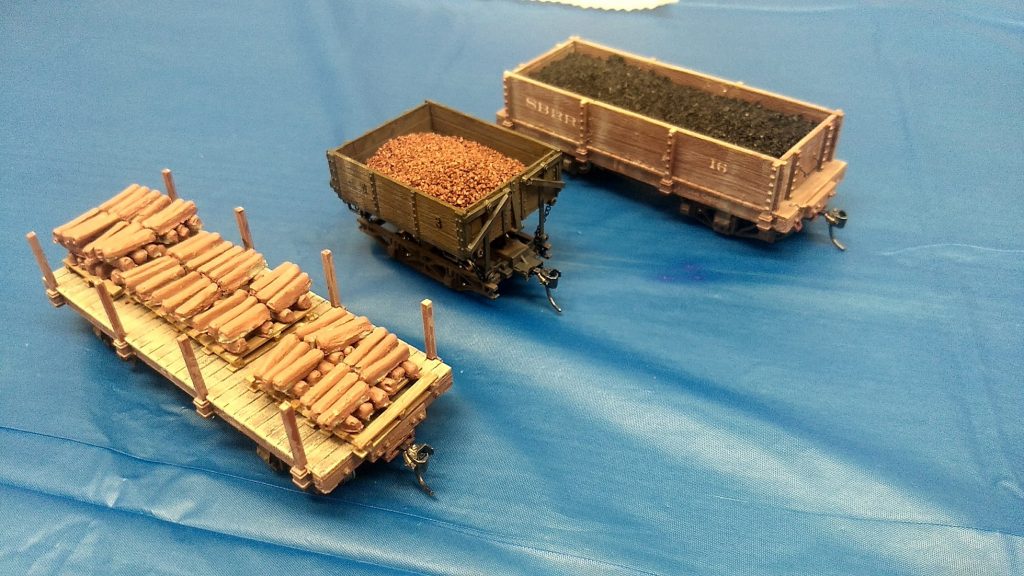
Cliff Aaker had some On30 cars with removable ore loads and ore pigs on pallets.
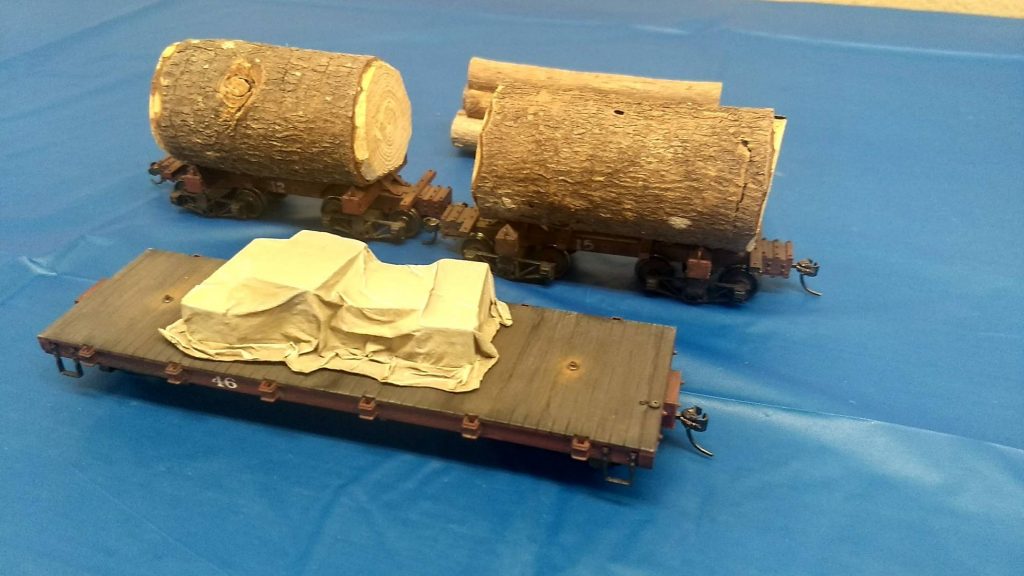
Rich Blake showed his On30 canvas covered crates which was made with balsa wood and glue soaked tissue paper. He also had a couple old growth logs on skeleton cars made from some dead fall found in the woods.
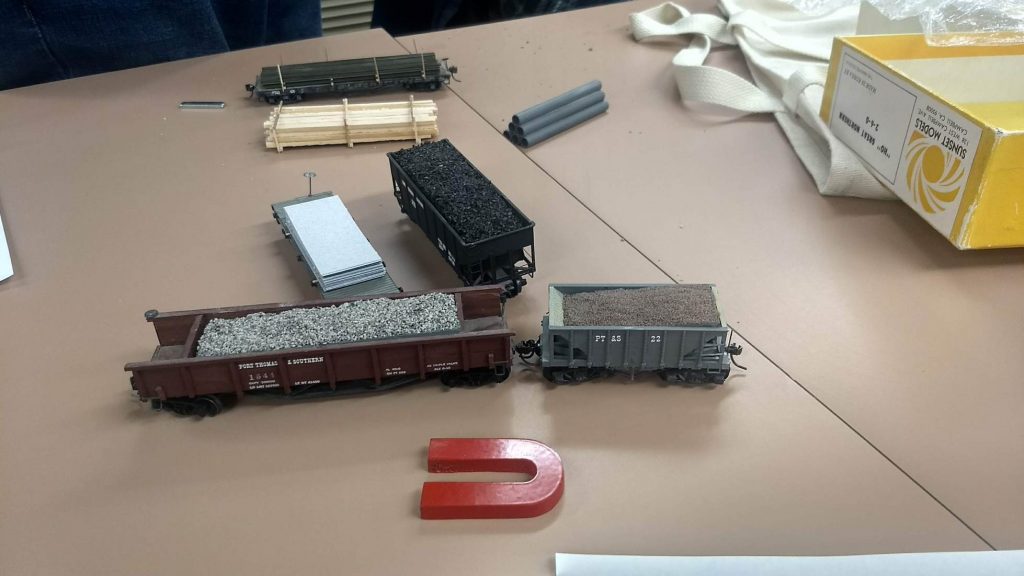
Tom Hawkins had several HO scale cars with the most interesting being gondolas with ballast and coal loads that could be removed with a magnet. The loads had steel washers or small steel bars glued into them for use with the magnet. He also had some flat steel plates made from painted card stock and blocked together. The plates had a realistic “sag” in the middle which made them look convincing. Tom also demonstrated some loads that are attached and tied to stakes which that fit exactly into the stake pockets of his flat cars but are still also removable to empty the car.

Susan then took over and talked about the many types of unique flat car loads she found during her research for the clinic. She showed many interesting historical photos of some of the things she found in books and the internet specifically on open car loads. While researching flat car loads for the clinic, Susan stumbled on some pictures of a model flat car load with a rock slab load using Styrofoam. Well one thing led to another (which is how the internet works) and she found some very interesting photos and history on marble quarry mining and hauling the huge blocks that are extracted from the mines.
Several areas of the country hauled marble blocks with the Yule Marble Quarry in Colorado being one of the most famous. Located at 9500’ the Yule mine marble was used to build the Lincoln Memorial and the Tomb of the Unknowns. While not a large industry today, at least 15 states had marble mining and railroad operations during the early and mid 1900s.
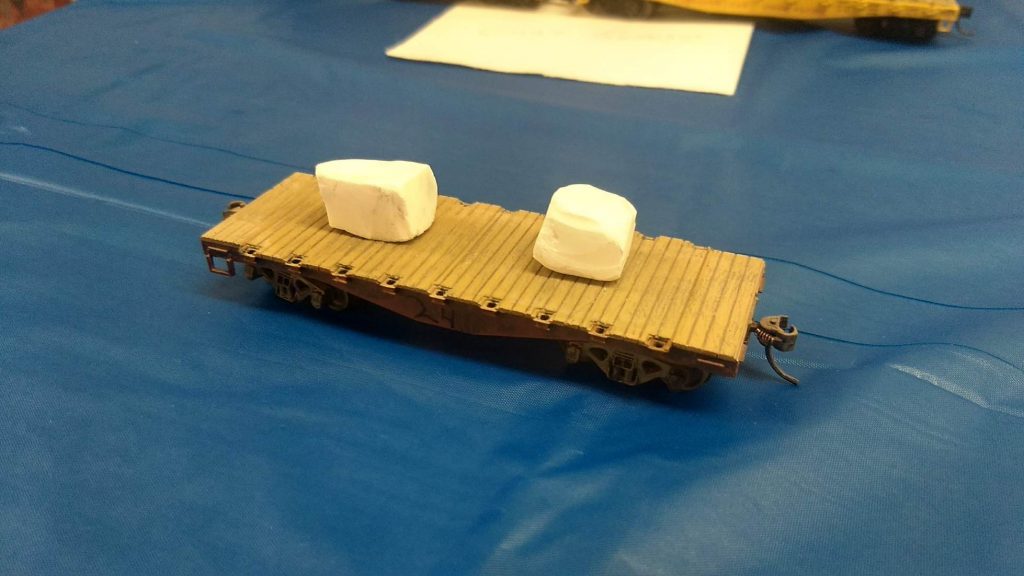
Susan showed some of her findings to simulate marble and other types of rock/boulder loads. Walmart and Michaels have a good selection of containers of decorative rocks that look like the real thing. A side benefit of using real rocks is that they add critical weight to normally light flat cars. Susans marble blocks were flattened on one side by her husband Phil with Dremel tool disks. This kind of work however creates a lot of dust so best done outside with protective glasses and dust mask. The blocks can then be secured with rope or chain depending on size of block. Marble is heavy.
For tying down loads Susan showed some hemp rope, small cable like strands, chain links and steel wire all found in the bead section of your favorite box store craft area. The hemp rope can be ran through a block of bees wax to smooth the fibers and also give it some rigidity for shaping into coils or tie downs wraps. The chain links looked very good but are a little oversized for HO scale. When the car is rolling down the track however this is hardly noticeable. Per foot the chain used for beading is considerably cheaper than model railroad “scale” chain.
Susan also found some metallic card stock at Walmart which she shaped into nice looking coiled steel. The card stock is cut to the desired width and rolled tightly to form a roll. Susan made a rolling helper tool out of plastic tubing that has a slot in it to hold the card stock tight in the center while rolling. She used Scotch High Performance Repair glue to seal the roll. Fingernail tape called “Strip-em” in 1/16th width was found on Amazon, chart tape could also be used. This tape was used to simulate banding around the steel coil. For loading on flat car or gondola blocking is needed to hold the rolls in place.
Susan also demonstrated use of floral wire to simulate iron bars or rebar for construction. She cut the wire to 30 foot lengths to fit her HO scale flat cars. To paint, lay masking tape down in the bottom of a cardboard box and fold over so that it is sticky on both sides. Lay the wire pieces in and spray paint flat black. Pull up the tape and turn the wire over on new sticky tape then spray again. Lay the painted rods on flat cars with blocking in between each set.
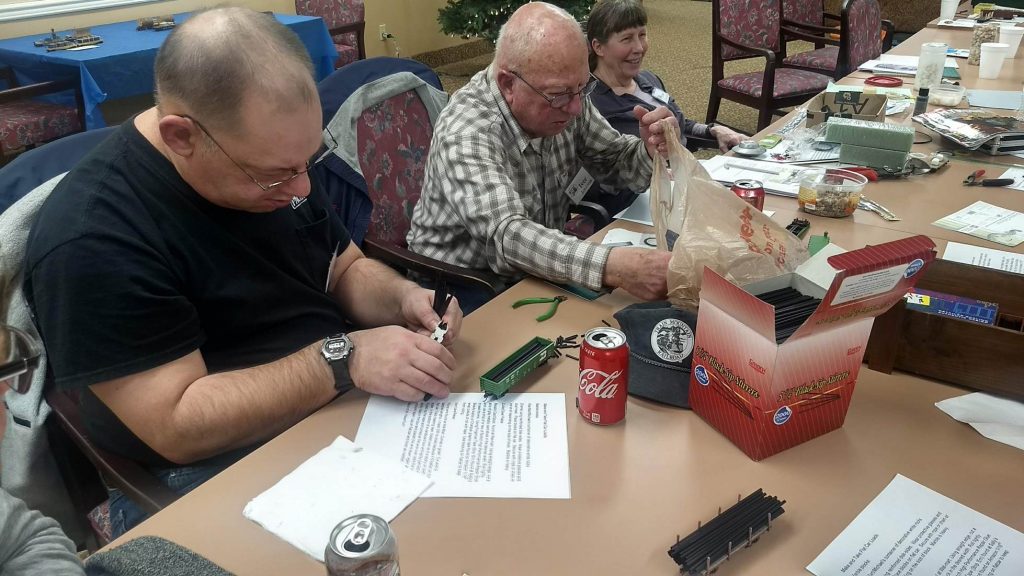
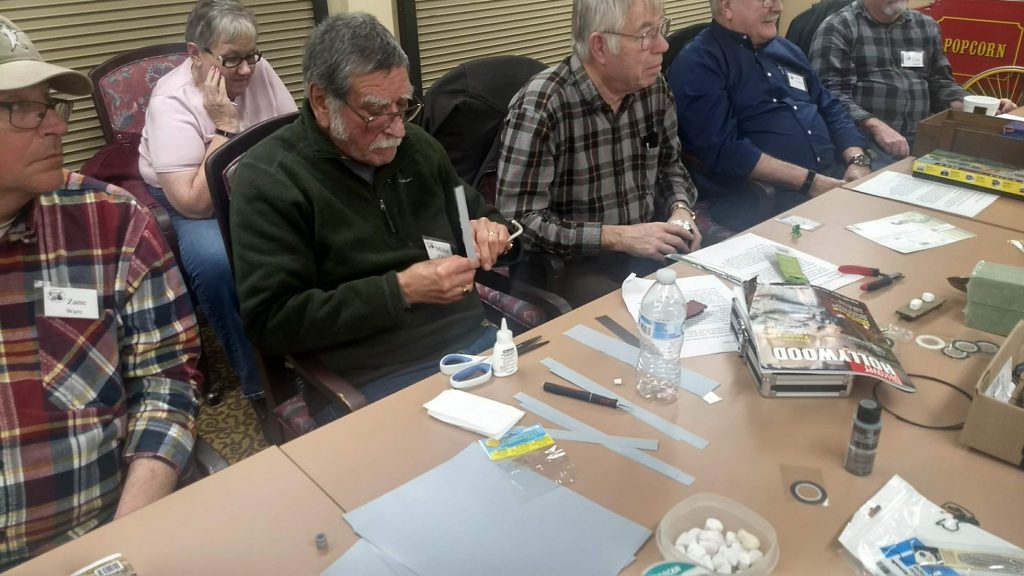
We spent the rest of the clinic experimenting with the various material examples Susan brought. Thanks to Susan providing all the materials to try out and executing a very interesting and fun clinic with a lot of hands on activity.
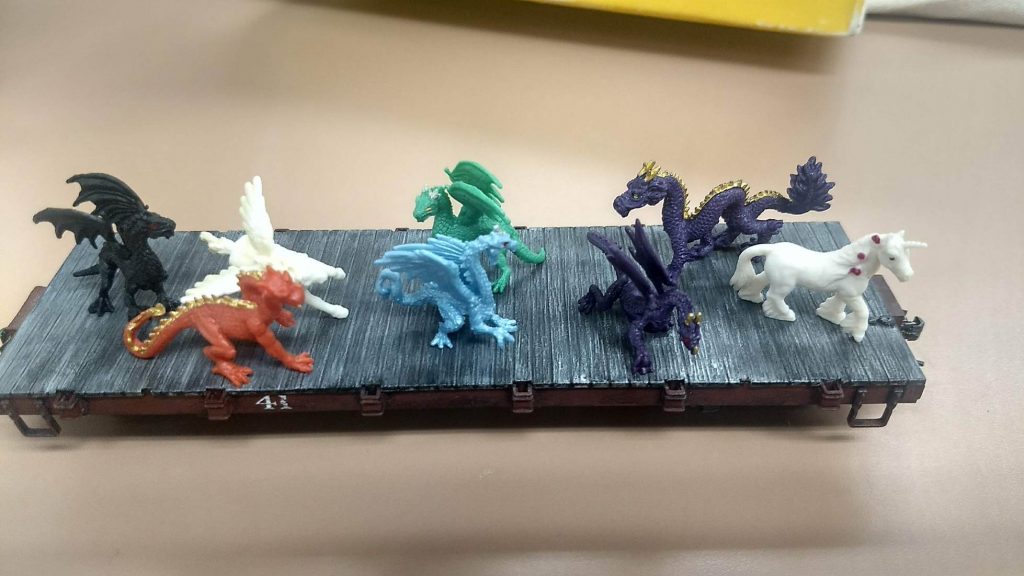
Links
Tiedown Handbook for Rail Movements
Marble Quarry History

I like that you used actual miniature diorama items to illustrate different methods for transferring huge loads of cargo via railroad flat cars. My cousin is in the railroad cargo business. We think we would need a train support expert on properly sustaining the support on the cargo, which can help us a lot since I plan to transfer my car interstate.